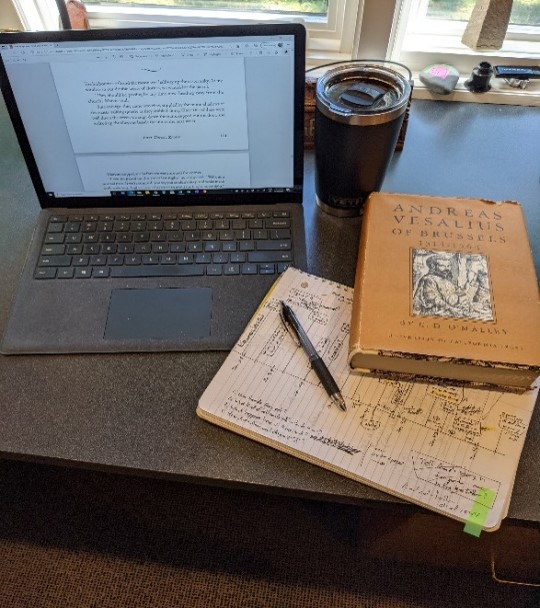If internet surveys are to be believed, most debut novelists are thirty-somethings, https://www.quora.com/What-is-the-average-age-for-novelists-publishing-their-debut-novel the outliers being a smattering of teenage wunderkinds and a British woman who in 2019 published her first novel at age 93. “The King’s Anatomist” was accepted for publication in my 74th year, far distant from the crowd of newbies young enough to be my grandchildren and within sight of that extraordinary nonagenarian. But what of it? In the end a novel gets written when the author is ready, willing, and able.
When I was a high school senior thinking about a career in medicine, my mother’s employers, rare book dealers, made me a gift of “Andreas Vesalius of Brussels 1514-1564.” They wanted me to know about Vesalius and his great 1543 textbook of anatomy. I gamely waded into the scholarly biography, but gave up after 20 pages; it was quite simply over my head. Nevertheless, the book remained on my shelf for fifty years, and when I retired, I gave it another try. I was ready to read it, and discovering the intriguing life of Andreas Vesalius became the inspiration for “The King’s Anatomist.” My grandfather status did not deter me; the writer in me, ageless but at the same time a veteran of life’s ups and downs, was up for the challenge.
With the “Andreas Vesalius of Brussels” as a foundation, I sought books and papers that helped me develop a feel for his personality and those of his contemporaries. And I certainly sought to understand what made his textbook, “The Structure of the Human Body,” a scientific, artistic, and bookmaking milestone. Other books provided a window into the turmoil of 16th-century Europe.
A stroke of luck brought me to a 2014 symposium on the Greek island where Vesalius died returning from a pilgrimage. There I met medical historians, anatomists, and artists with a deep interest in Vesalius, some of whom have been gracious in answering questions that arose during the writing of the novel.
For me, much of writing is problem-solving. I resolved major issues with the plot, the characters, and who the narrator would be by writing sketches of the major characters and making a detailed timeline of Vesalius’ life. But I hunkered down to resolve the small problems as well – problems that can distract and annoy readers. I also realized that including images in this novel would enrich the reading experience. Takeaway #1: patient, organized forethought makes for confident and efficient writing, and helps avoid stumbling into plot holes or letting characters not remain true to themselves. Takeaway #2: open your manuscript to critiques from trusted beta-readers and your editor; your book will be the better for them.
Declaring the manuscript finished was deeply satisfying, but what followed was a year-long string of rejections and dashed hopes. Finally, my manuscript found a happy home at the indie publisher History Through Fiction. Takeaway #3: Thick-skinned persistence.
In the not-too-distant future, my granddaughter will read her grandpa’s novel. For me it will be well worth the wait.

